#fort apache the bronx
Photo

(via Pulp International - 1981 promo image of Pam Grier)
Pam Grier posed for this photo when she was making the a-list crime drama Fort Apache, The Bronx. 1981
250 notes
·
View notes
Text

#1980s aesthetic#movies#vhs gif#vhs#vhs tapes#for a few dollars more#fort apache the bronx#mash#1980s tv
4 notes
·
View notes
Text










Fort Apache, the Bronx
Daniel Petrie
USA, 1981
★★★
This is NOT the Carlitos Tevez biopic I was told.
This feels like a whole season of a tv show crammed into a two-hour movie; not bad but not terribly engaging either. Pretty solid when it wants to, goofy, not-too-serious, the works. It works until it doesn't, and so on.
1 note
·
View note
Text

Pam Grier "Distrito apache: el Bronx" (Fort apache, the bronx) 1981, de Daniel Petrie.
106 notes
·
View notes
Note
“Sabrina” (the fifties version) & “Fort Apache, the Bronx”
Sabrina: never seen | want to see | the worst | bad | whatever | not my thing | good | great | favorite | masterpiece
Bogie lover & defender of his “miscasting” until the day I die 💗
Fort Apache, the Bronx: never seen | want to see | the worst | bad | whatever | not my thing | good | great | favorite | masterpiece
Ooh never heard of this but great cast! I’m on board!
2 notes
·
View notes
Text
Fort Apache, The Bronx is a 1981 American crime drama film directed by Daniel Petrie. The film is about a hard-drinking, lonely veteran cop, Murphy (Paul Newman), and his young partner Corelli (Ken Wahl), who work in a crime-ridden precinct in the Bronx. Although Murphy's life takes a good turn when he falls in love with Isabella (Rachel Ticotin), a young nurse, the arrival of a new, law-and-order-minded police captain commanding the precinct, Connoly (Ed Asner) threatens to tip the neighborhood's delicate balance into anarchy. Danny Aiello, Kathleen Beller, and Pam Grier play supporting roles. It was written by Heywood Gould and produced by Martin Richards and Thomas Fiorello, with David Susskind as executive producer.
It was filmed on location in the Bronx. Author Tom Walker sued Time-Life Television, alleging that the film infringed on his book Fort Apache, but lost after a lengthy court battle. The film received mixed reviews; however, Newman's acting was noted as a strength of the film. In addition, the film was the main inspiration for the long running police drama series Hill Street Blues.[3]
3 notes
·
View notes
Photo

Fort Apache, The Bronx (1981)
by Daniel Petrie
14 notes
·
View notes
Text

Happy Birthday, in memoriam, to Paul Leonard Newman.
(January 26, 1925 – September 26, 2008)
Newman's major film roles include The Hustler (1961), Hud (1963), Harper (1966), Cool Hand Luke (1967), Butch Cassidy and the Sundance Kid (1969), The Life and Times of Judge Roy Bean (1972), The Sting (1973), The Towering Inferno (1974), Slap Shot (1977), Fort Apache, The Bronx (1981), and as the voice of Doc Hudson in Cars (2006) as his final acting non-documentary role, with his archival voice recordings being used again in Cars 3 (2017), nine years after his death. A ten-time Oscar nominee, Newman was awarded an Academy Award for Best Actor for The Color of Money (1986).
4 notes
·
View notes
Text


Ed Asner as Santa Claus in Elf (2003). Ed was born in Kansas City and had 411 credits four 1957 tv episodes to seven unreleased credits. His entries among my best 1001 are El Dorado,
His other notable credits include four episodes of The Untouchables, They Call Me Mister Tibbs, Skin Game, Roots (2 episodes), The Mary Tyler Moore Show (166), Fort Apache the Bronx, Lou Grant (114), JFK, and the voice of Carl in Up.
1 note
·
View note
Text
#1 movie on February 3, 1981
Average Ticket Price: $2.78
Movie: Fort Apache, The Bronx
Rating: R
IMDb: https://www.imdb.com/title/tt0082402/
0 notes
Text
Tom cruise bartender

#TOM CRUISE BARTENDER MOVIE#
– Making Cocktail in Canada was a bit of a homecoming for Cruise. He returned in 1998 to attend the Toronto International Film Festival as producer of Without Limits and popped into the city briefly in the summer of 2010 to visit daughter Suri while his then-wife Katie Holmes was shooting The Kennedys. While his then-wife Nicole Kidman was making 1995’s To Die For in Toronto, Cruise spent time in the city learning learning to fly and earned his pilot’s license.
#TOM CRUISE BARTENDER MOVIE#
– Cocktail is the only movie Cruise ever made in Toronto – but it wasn’t the last time he was in the city. “All of those things are themes that young people are concerned with and definitely identify with… and still do.” What are you going to do with your career? What are you going to do with your love life? How are you going to handle your parents? All of those issues are explored in that movie,” Donaldson said in an interview last year with Movie Fanatic. “It’s a movie that speaks to young people and their lives. With dreams of opening his own bar, Brian takes a job at a beach resort in Jamaica and falls for Jordan Mooney, a girl from a wealthy family (Elisabeth Shue).Ī quarter-century after Cocktail opened in theatres, its director explains why it still resonates with audiences. In today’s dollars, Cocktail was a $300 million blockbuster.Ĭruise was Brian Flanagan, an American soldier returning to civilian life in New York City who meets a veteran bartender (Bryan Brown) and balances college studies and a job behind the bar. It gave Cruise his best opening weekend - beating Top Gun by $3.6 million – and went on to earn $172 million worldwide. and Canada for two weeks before being bumped by Young Guns. The movie earned $11.8 million on its opening weekend and remained in the No. Written by Heywood Gould (previously a writer and producer of TV’s The Equalizer) and directed by Roger Donaldson (who had just made No Way Out starring Kevin Costner ), Cocktail was Cruise’s tenth movie and came hot on the heels of Risky Business, Top Gun and The Color of Money. “But it wasn’t a movie that stood out for me.” “Everybody was in awe of Tom Cruise because he was just ascending and he was definitely in control of the movie,” recalls Stuart Aikins, the movie’s Toronto casting director, from his home in B.C. The simple tale of a bartender who tossed bottles and landed a wife – which opened in theatres on J– was largely filmed in Toronto. TORONTO – Cocktail, the movie that cemented Tom Cruise’s leading man status in Hollywood and made audiences dream of a place called Kokomo, celebrates its 25 th birthday on Monday.
Send this page to someone via email email.
This proved in the ‘80s that all Tom Cruise needed was a ridiculous undertaking. Still, the film did gross over $170 million against a budget of just $20 million. Sure, Roger Ebert wrote, "The more you think about what really happens in “Cocktail”, the more you realize how empty and fabricated it really is." Richard Corliss of TIME wasn’t much kinder saying it was "a bottle of rotgut in a Dom Perignon box."Ĭruise, for his part, admitted, "Cocktail is not my crowning jewel." However, alongside his Oscar nomination for that year’s “Rain Man,” “Cocktail” earned him the distinction as the only actor nominated for an Academy Award and a Razzie in the same year. The star characteristically threw himself into “flair bartending,” while breaking so many bottles, they eventually switched to plastic. The people came to see Tom Cruise flip bottles while preaching about shots called the death rattle and orgasm. It was written by the guy who wrote Fort Apache The Bronx, and it was a much darker movie, but Disney took it, reshot about a third of it, and turned it into flipping the bottles and this and that."Īs it turns out, no one cared about the overarching criticism about ‘80s excess. But it was obviously a really successful movie, if not as good as it could’ve been. With Cruise came inevitable changes as actress Kelly Lynch explained, " was actually a really complicated story about the ’80s and power and money, and it was really re-edited. Eisner says, 'He'll never do this, don't waste your time, he can't play this part.' And then Katzenberg says, 'Well, he's really interested in doing it,' and without skipping a beat, Eisner says, 'He's perfect for it, a perfect fit!' That's the movie business: I hate him, I love him I love him, I hate him!" "Someone mentioned that this might be a good vehicle for Tom Cruise. Despite the long list of potentialities, Gould shared an illuminating story regarding Disney’s head honchos, Michael Eisner and Jeffrey Katzenberg, about how the big decision was made.

1 note
·
View note
Text

#movies#Fort Apache the Bronx#Daniel Petrie#Paul Newman#Ed Asner#Ken Wahl#Danny Aiello#Pam Grier#Erik Estrada#1981
12 notes
·
View notes
Text
Unbroken Windows: How New York Gentrified Itself On Screen by Jason Bailey
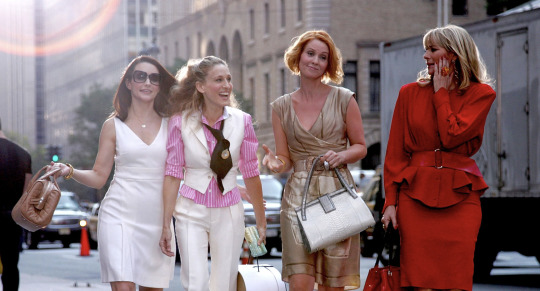
It was 1972, and Lewis Rudin had a problem—specifically, a Johnny Carson problem. Rudin, a real estate developer and committed New Yorker, had founded the Association for a Better New York (ABNY), an organization dedicated to cleaning up the city’s image (and thus, its attractiveness to corporate clients) via aggressive campaigning and spit-shine marketing; the organization was, for example, instrumental in the development of the iconic I ❤ NY campaign.
But all the good work ABNY was doing, Rudin fumed to the organization’s executive director Mary Holloway, felt like pushing Sisyphus’ boulder when he switched on NBC late at night: “How can we change the image of New York when Johnny Carson's opening monologue every night is about people getting mugged in Central Park?”
As reported by Miriam Greenberg in her book Branding New York: How a City in Crisis Was Sold to the World, Rudin went to the trouble of meeting with network heads, imploring them to pressure personalities like Carson to lighten up on the “New York City is a crime-ridden cesspool” jokes. In 1973, Mayor John Lindsay himself called network executives and even some comedians to a City Hall meeting where he made a similar plea. This was in stark contrast to the usual modus operandi of the Mayor’s Office of Film, Theatre, and Broadcasting, which prided itself on avoiding censorship or editorial interference in the making of motion pictures in the city—indeed, several of the grimmest, grimiest portraits of life in New York (Death Wish, Panic in Needle Park, Little Murders, The French Connection) were borne of this period. But people had to go out to see those. Johnny Carson came into their living room every night to tell them what a shithole New York was.
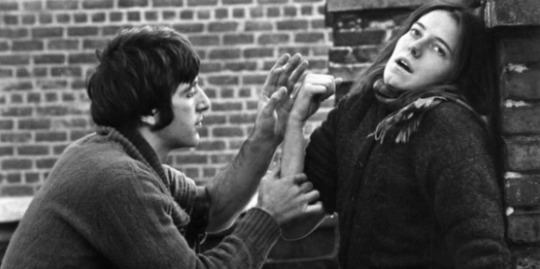
Rudin and Lindsay’s efforts were ultimately unsuccessful. Johnny Carson continued to roast the city—especially after escaping it when The Tonight Show relocated to Burbank, California in 1972—and prime-time comedies like All in the Family, Taxi, and Welcome Back, Kotter mined similar veins of urban unrest. Meanwhile, gritty crime series from Kojak to Cagney & Lacey to The Equalizer presented a similar picture of the city—dirty, grimy, and dangerous—to that of films like Taxi Driver, The Taking of Pelham One Two Three, The Warriors, and Fort Apache, The Bronx.
But in the 1990s, that all changed. And there’s a compelling case to be made that the change began with Jerry Seinfeld.
*

If we talk about Jerry Seinfeld, of course, we have to talk about Woody Allen, and not just their obvious similarities (roots in stand-up comedy, neurotic Jewish New Yorker persona, tabloid mainstay). In the 1970s and 1980s, while most New York movies were dwelling in the horrors and shortcomings of the city, Allen insulated himself in his upper-class Upper East Side neighborhood and made movies about people who were mostly untouched by crime, homelessness, and graffiti. In films like Annie Hall, Manhattan, Hannah and Her Sisters, and Crimes and Misdemeanors, Allen’s characters sip wine and trade hard truths and pointed witticisms at the city’s finest restaurants, parties, and apartments as the city burns around them; in Manhattan (which, by its own opening monologue admission, romances the city “all out of proportion”) he even edited out a joke about muggings from a Central Park carriage ride sequence, so as not to spoil the delicate mood. Allen’s New York was “not another world,” Martin Scorsese once said. “It’s another planet.”
That vision of New York—upper-crust, erudite, sophisticated—wasn’t entirely absent from the big and small screen in the ‘70s and ‘80s, thanks to films like An Unmarried Woman and Kramer Vs. Kramer, and such TV shows as Diff’rent Strokes and The Cosby Show. But Allen’s films, and even more so Rob Reiner and Nora Ephron’s Allen-esque When Harry Met Sally (a far bigger commercial success than any of Woody’s work), created a vision of comfortable, upscale, wise-cracking New York living that would reach a mass audience via Seinfeld, which debuted in 1989.
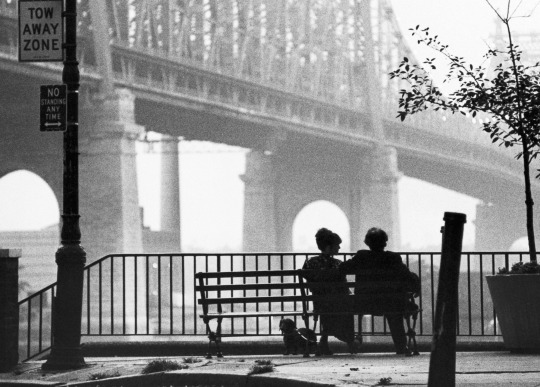
The first two brief seasons of Seinfeld (or, as it was originally titled, The Seinfeld Chronicles) struggled in the ratings, but it slowly built an audience and climbed in the Nielsens, and by season five (1993-1994) it was one of the top five shows on the air, anchoring NBC’s “Must See TV” line-up of Thursday night sitcoms. In September 1994, it was joined on Thursdays by another comedy, in which urbane New York pals joked, dated, and shared the horrors of city living. Friends, however, was a rating smash right away, and not only because of its killer schedule placement. It sanded away the rougher edges of Seinfeld; its characters were more likable (or, at least, intended to be), and its humor was less spiky. It ran even longer than Seinfeld, ten seasons, every one of them in the top ten, all but one in the top five.
*
Even as these New York comedies—and others that followed, like Mad About You, Caroline in the City, and The Single Guy—were topping the ratings, the face of the city was changing. “Don’t forget to in the late ’80s, you came off of a couple of financial crises, some bad times,” explains agent Chris Fry, of Elegran Real Estate. ”It was a little bit more affordable, things were dropping. And I think the shows that you’re talking about definitely had a positive effect on what people perceived New York City to be.”
Crime was on the decline across the country, but especially in New York City, a drop that began under Mayor David Dinkins and continued under Rudy Giuliani. The latter, in coordination with NYPD commissioner William Bratton, instituted an aggressive policy of enforcing so-called “quality of life” crimes like graffiti, turnstile-jumping, and panhandling; this philosophy, modeled on James Q. Wilson and George L. Kelling’s controversial “broken windows” theory, held that if these comparatively minor yet highly visible crimes were eradicated, the city would look clean and controlled, and thus psychologically discourage a lawlessness that would result in fewer serious offenses like murder, rape, and theft.
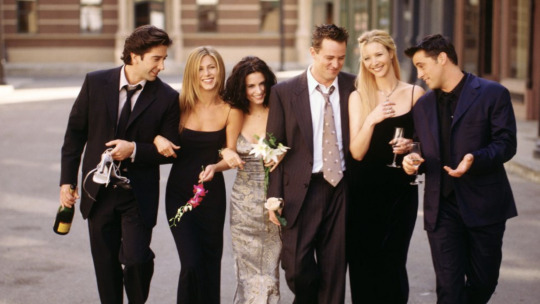
This vision of the city was certainly reflected in NBC’s Thursday night lineup. The early ‘90s comedies found fodder in the minor inconveniences of city life, but rarely trod into the seediness and crime that defined such earlier sitcoms as Night Court and Barney Miller. Paul and Jamie Buchman’s apartment wasn’t burglarized; none of the Friends were mugged in Central Park. When a blackout hit New York City in the summer of 1977, there were over one thousand fires, over 1500 damaged and/or looted stores, and nearly four thousand arrests. When a blackout hit NBC’s Thursday night New York City in the fall of 1994, Chandler Bing got trapped in an ATM vestibule with a supermodel.
If these sitcoms were the television reflection of the “broken windows” theory, their creators had a much easier time cleaning up New York City—in part because they weren’t shooting in it. Much like the films set in New York City before Mayor Lindsay established the Mayor’s Office of Film, Theatre, and Broadcasting, all of these series were shot on soundstages and backlots in California, with the exception of the occasional second-unit exterior establishing shot. So they took place in New York City, but the version of New York City they presented was highly fictionalized. Just as Paul and Jamie, Jerry and the gang, and the Central Perk crew were funnier and sharper than real New Yorkers (and lived in apartments far beyond their means), the New York they lived in was squeakier and clearer.
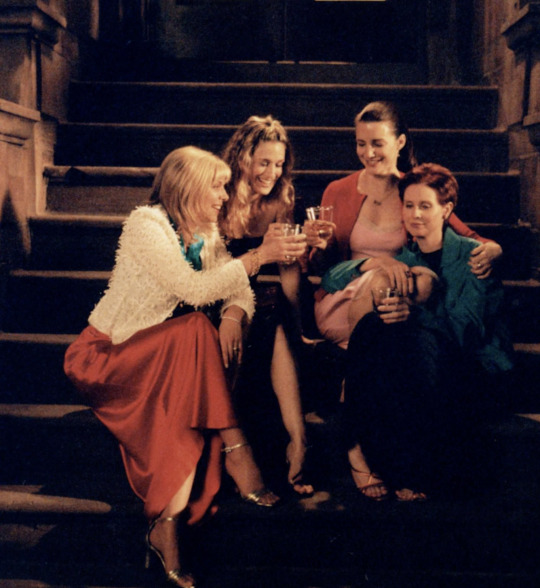
“I love Friends,” says Sire Leo Lamar-Becker, who was inspired by the shows of the ‘90s to leave California and move to New York, where he currently works in the fashion industry. “But Friends was so sterile. It didn’t feel real. And what Sex and the City offered was, I felt, a more nuanced portrayal of the city.”
Like the New York movies from the late 1960s onward, Sex and the City had the advantage of authenticity: It was shot entirely in New York, the exteriors and the sets (constructed and filmed at Silvercup Studios) and everything in between. “If you’re familiar with this series, and the movies, the city is integral to it,” explains tour guide Lou Matthews. “They've called it, like the fifth girl is the city. It's really crucial.” As a guide for the “Sex and the City Hotspots Tour,” which On Location Tours has conducted since 2001, Matthews has seen, firsthand, the psychological effect of that particular show.
“I've definitely met girls in their twenties, or maybe they’re still in college, on the tour who are saying, ‘Yeah, I fell in love with Sex in the City and New York City because of Sex in the City. And like, I’m already trying to figure out how I can get a job here.’ And then I’ve definitely met a few where the reason they moved here was because of Sex in the City, like they wanted the life that Carrie has. And here they are.”
The life they found was, in most cases, not exactly what these shows promised. “As someone who has lived here for 10 years,” laughs Lamar-Becker, “sure, there are some things that are unrealistic—like, Carrie being able to afford all her shoes. That’s unrealistic. But the feeling of the city is always captured well.”
And that indefinable but unmistakable quality, that feeling of the city, is what’s shifted most over the past quarter-century or so – through Seinfeld and Friends and Sex and the City into 30 Rock and Gossip Girl and Girls, through When Harry Met Sally and You’ve Got Mail to The Devil Wears Prada, Trainwreck, and even The Avengers. Some of that shift in public perception is merely a reflection of reality, of filmmakers and show-runners pointing their cameras at the city and capturing the gentrified, yuppified, Disney-fied mutation it’s become.
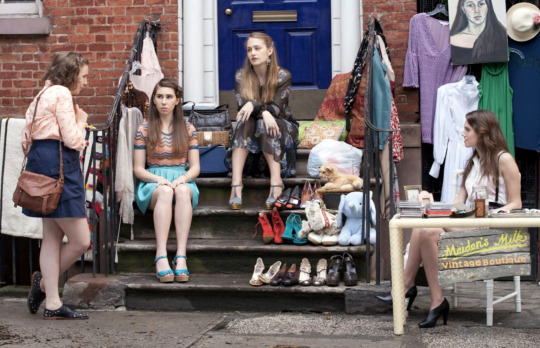
But some of that is also life imitating art. Every day, Lou Matthews’s tour bus is filled with people like Sire Leo Lamar-Becker, members of a generation of viewers whose impressions of New York were formed not by Taxi Driver and Kojak, but by the Sex and the City films and Netflix binges of Friends. They watched those shows and memorized those movies, and then migrated to New York City like so many immigrants before them. Their predecessors flocked to Ellis Island, lured by promises of a new world. These settlers came to the Magnolia Bakery, seeking not so much a new world as a better one, full of enviable careers, witty friends, and all the cosmos they could drink.
Lewis Rudin would have been proud.
#New York City#johnny carson#lewis rudin#abny#death wish#panic in needle park#little murders#the french connection#all in the family#taxi#taxi driver#welcome back kotter#the equalizer#cagney and lacey#the taking of pelham 1 2 3#the warriors#fort apache the bronx#seinfeld#woody allen#manhattan#hannah and her sisters#annie hall#crimes and misdemeanors#kramer vs kramer#an unmarried woman#martin scorsese#diffrent strokes#the cosby show#friends#sex and the city
5 notes
·
View notes
Photo


I drew on VHS covers and labels often as a kid. On a Vestron Video VHS of Fort Apache The Bronx I drew @foxmovies and Time Life logos, as those logos were absent on the package design.
The VHS shows the Fox logo (with 1935 fanfare) at the beginning, so it made sense to me to reflect that particular company (and I loved the studio’s logos very much back then). The copyright notes Time Life Films, Inc., but not Twentieth Century-Fox Film Corporation.
There’s no Time Life logo on the VHS, though.
#fanart#fanart friday#fan art#fan art friday#fanartfriday#fanartfridays#fan art fridays#fanart fridays#20th century fox#time life#time-life#time life films#fort apache the bronx#vhs#drawing#sketch#sketches#logo#logos#vhs label#vhs labels#21st century fox#opening logo#opening logos#vestron video#lionsgate#20th century studios#twentieth century studios
2 notes
·
View notes
Video
youtube
Fort Apache, The Bronx (1981) - trailer
In New York, South Bronx's main police precinct is nicknamed Fort Apache by its employees who feel like troopers surrounded by hostiles in a wild west isolated outpost.
#Fort Apache The Bronx#Paul Newman#Ed Asner#Ken Wahl#Pam Grier#Danny Aiello#Rachel Ticotin#Kathleen Beller#80s#movies#trailers#police#crime#New York#Bronx
2 notes
·
View notes
Photo

Distrito Apache (Fort Apache, The Bronx), de Daniel Petrie, 1981
#Distrito Apache#1981#1980s#Fort Apache The bronx#películas#poster#movie posters#Daniel petrie#directores
6 notes
·
View notes